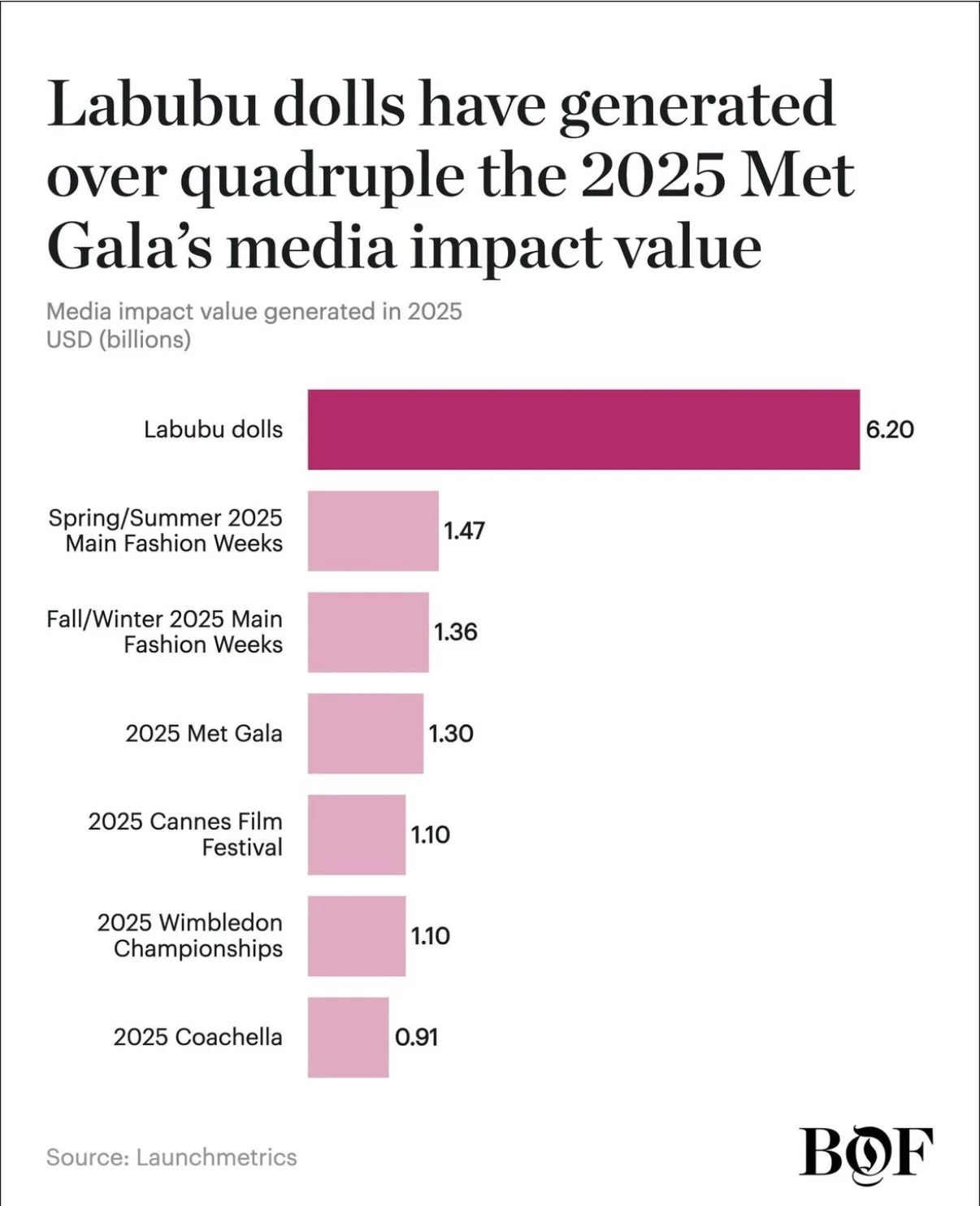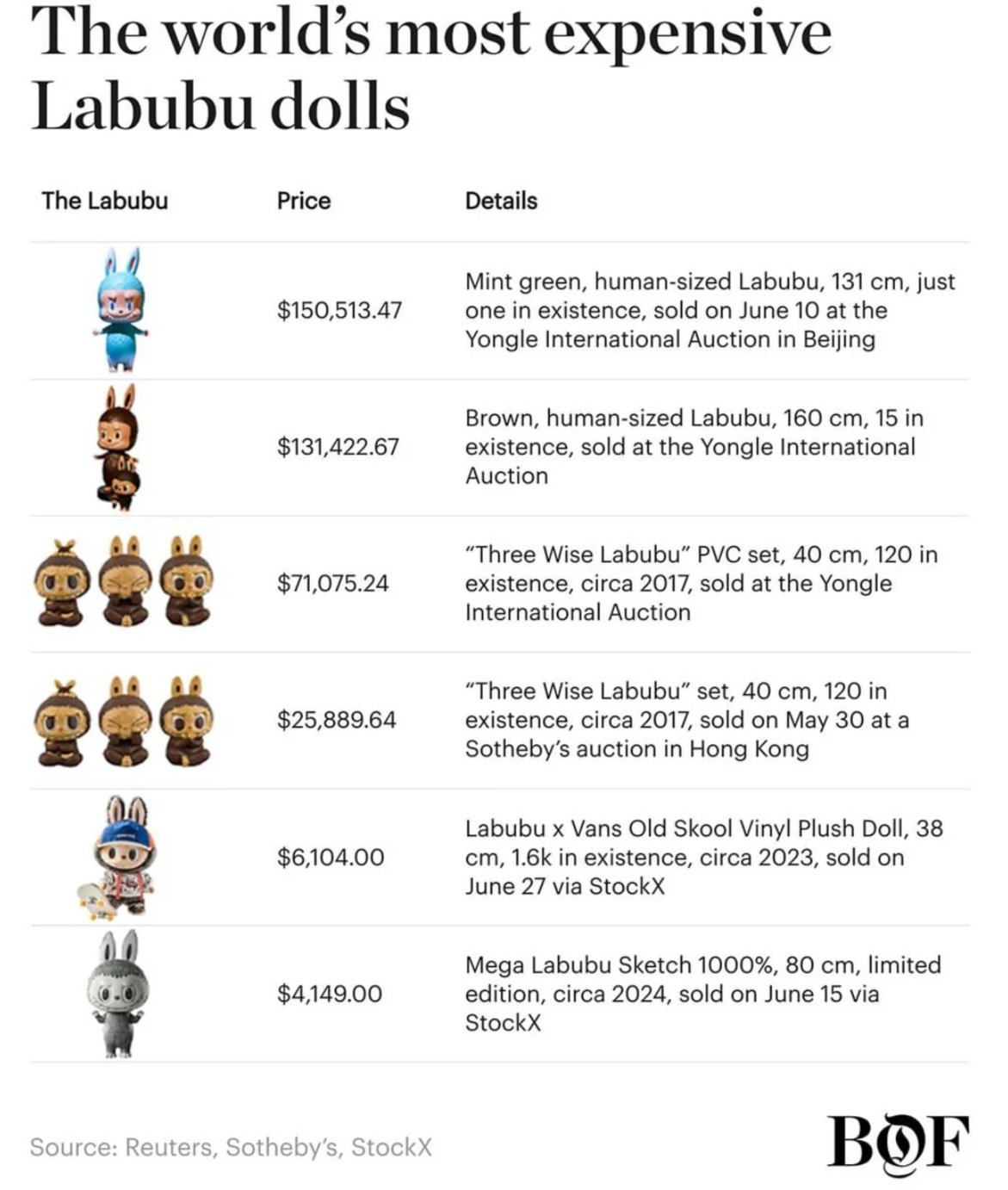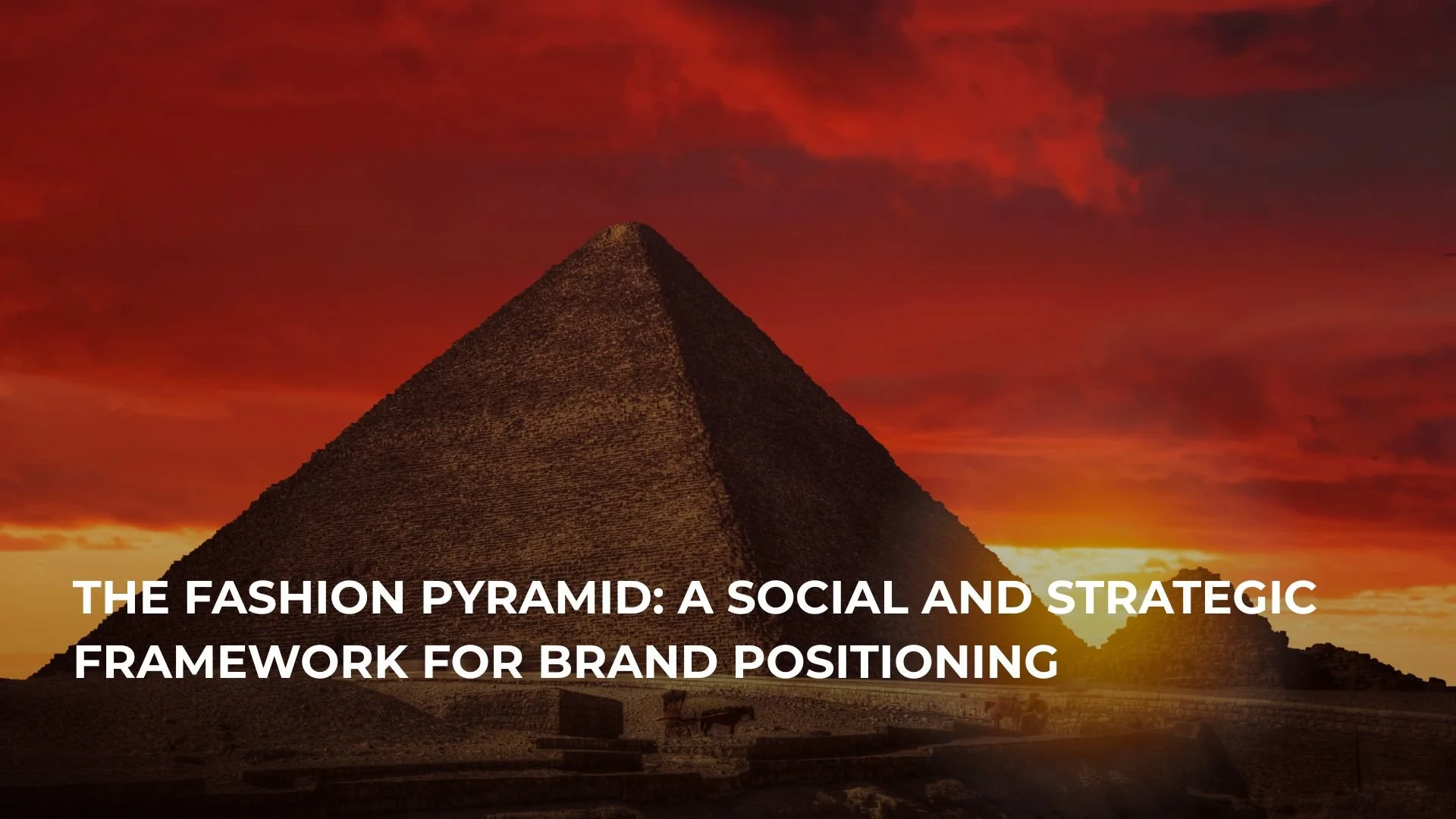The Business Behind the Hype
What Labubu Dolls Can Teach Emerging Fashion Brands About Strategic Growth
In early 2025, a niche designer toy quietly outperformed some of the biggest events in fashion. Labubu dolls, created by Chinese brand Pop Mart, generated an estimated $6.2 billion in media impact value (Launchmetrics), surpassing the Met Gala, global Fashion Weeks, and even Cannes.
Some editions have sold for as much as $150,000 at auction. They’ve appeared on StockX, in resale marketplaces, and on the arms of stylists, collectors, and fashion insiders alike.
But the story here isn’t just about a toy. It’s about a business model that worked.
For emerging fashion brands, Labubu is a rare example of how thoughtful product strategy, cultural relevance, and emotional connection can come together to create explosive demand.
Here’s how it happened, and how you can apply the same principles to your own brand.
1. They Managed Supply and Created Revenue Peaks
Pop Mart didn’t launch Labubu with constant availability. Instead, they used small-batch drops, mystery packaging, and limited edition runs to create clear revenue windows. Each release had a clear beginning, a short sales period, and often sold out quickly.
Why it worked: This approach kept inventory risk low and customer interest high. It also allowed them to maximize margins and attention during short, focused moments.
How you can apply it:
If you’re struggling with slow sales, consider a different rhythm. Test small, exclusive drops with a strong pre-launch plan, limited stock, and a deadline. People are more likely to take action when they know it won’t be around forever.
2. They Built Community Before They Built Influence
Labubu didn’t rely on celebrity endorsements or paid influencer campaigns. It grew inside real communities: toy collectors, anime fans, and streetwear circles. These groups shared organically, creating momentum long before Pop Mart spent on marketing.
Why it worked: Word-of-mouth from trusted communities carries more weight than mass reach. It’s more personal, more targeted, and more believable.
How you can apply it:
Find the subcultures where your customer lives. Whether it’s indie fashion forums, design TikTok, or art-school grads on Instagram, show up there first. Partner with micro-creators who speak to your audience in a genuine way.
3. They Let the Resale Market Tell the Story
Labubu’s resale value became a key part of its hype. Some editions resold for 25 to 100 times their original price. That resale activity added to its reputation and made every new drop feel more desirable.
Why it worked: Resale shows that your product has value beyond the first transaction. It signals cultural relevance and buyer demand.
How you can apply it:
You don’t need to reach luxury resale prices. But if your product has zero resale appeal, use that as a signal. Try smaller runs, special packaging, or co-branded drops to create more perceived value.
4. A Story
Every Labubu doll has a backstory. It’s not just a toy; it’s a character with meaning. That narrative extends across packaging, social content, and limited editions. It creates emotional connection.
Why it worked: People don’t just buy design. They buy what it represents. Story builds brand loyalty in a way visuals alone can’t.
How you can apply it:
Start every collection or product drop with a theme. It can be inspired by your own experiences, your values, or the feeling you want to evoke. Share the story behind the design before you sell it. That’s what people remember.
5. They Crossed Categories to Expand Visibility
Labubu started in toys, but quickly moved into streetwear, lifestyle, and art spaces. Pop Mart didn’t stay in one lane. They created collaborations and visibility across different industries, which helped the brand scale faster.
Why it worked: When people see your product in different contexts, it gains depth and versatility. That attracts wider audiences without diluting the brand.
How you can apply it:
Think outside fashion. Could your product fit in a gallery? A music event? A design-focused market? Collaborating beyond your usual category can open up new customer groups and press opportunities.
What Really Made It Work: Emotion
Labubu didn’t go viral just because of smart supply tactics or community strategy. It resonated because it gave people something they needed…comfort, nostalgia, a small moment of joy.
In a stressful world, that kind of emotional experience spreads. People didn’t just want the product. They wanted the feeling that came with it.
And that’s something every brand can offer. If your product brings meaning, delight, or even a moment of calm, you’re already creating something valuable. The key is learning how to position and share it in a way that makes people feel something.
Need help turning your vision into a brand that grows?
At Fashion Brand Advisor, we help founders build brands that are creatively fulfilling and financially sound. Together, we look at your strategy, positioning, marketing, and operations to make sure everything is aligned for sustainable growth.









